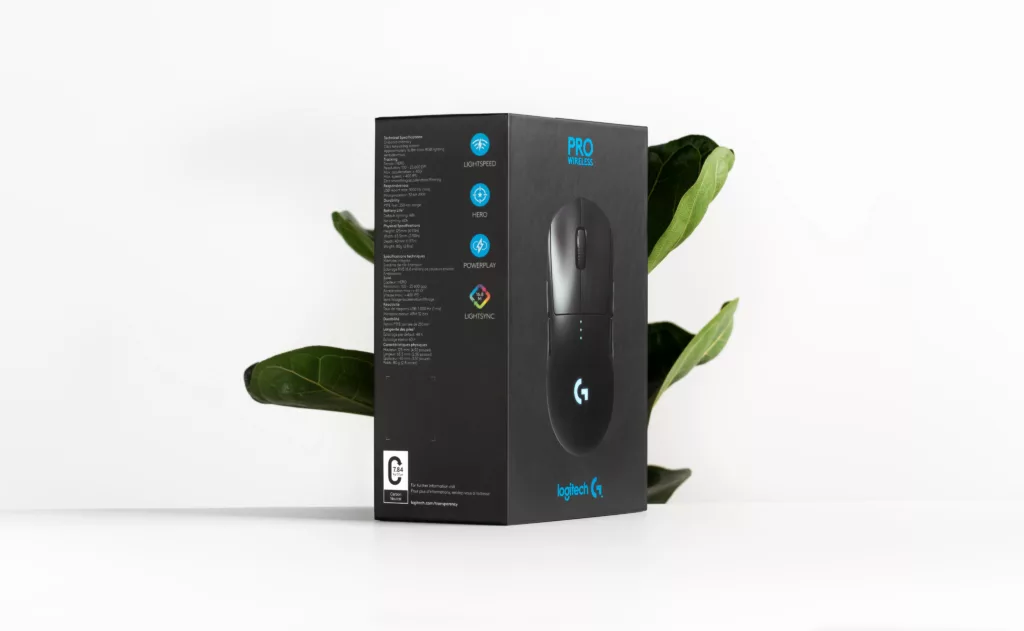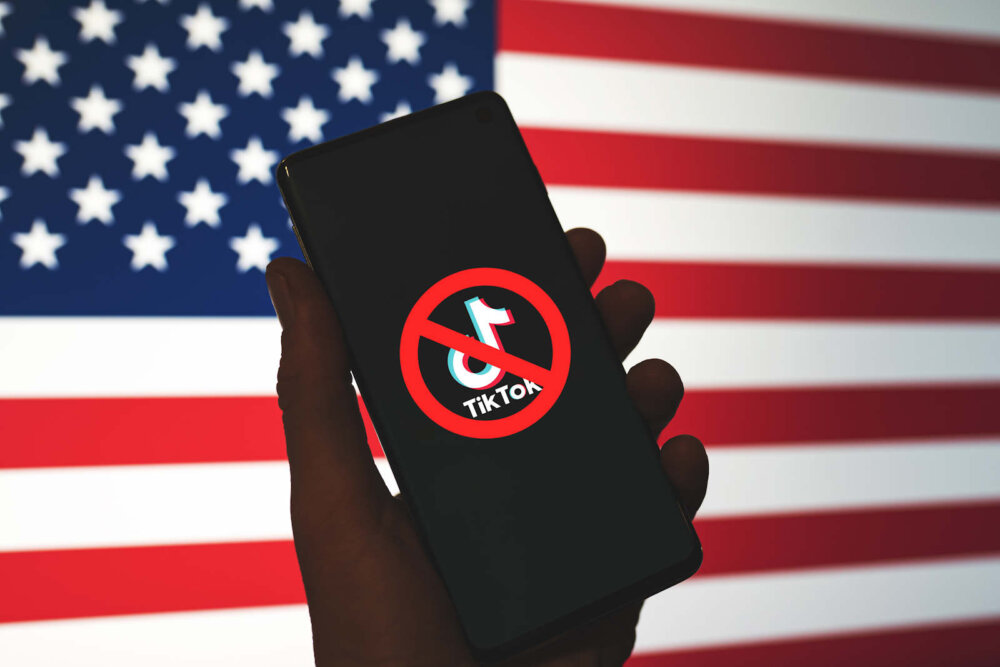
Is Logitech a green and sustainable company?
Take a glance at the annual reports of most major corporations and you’ll spot that sustainability has become a hot watchword. Whilst we should celebrate that more organisations have awoken to the needs of the planet, we must also be wary of greenwashing and environmental disinformation. Here, we look at Logitech: how green and sustainable is it?
While the products it makes may be small, Logitech itself is a global tech giant. In 2022, it achieved $5.48 billion in sales. That’s a lot of mice, keyboards, headsets and webcams. Not to mention all the meeting-room solutions it sells to businesses.
Logitech’s latest impact report makes big claims about its environmental credentials. We’ve performed a detailed evaluation, looking closer at the legitimacy of Logitech’s statements.
What is Logitech’s climate strategy?
“Designing a Positive Future” is the title of Logitech’s latest impact report and it covers an array of environmental and social initiatives and goals. Amongst its key sustainability ambitions are obvious targets for carbon reduction alongside mineral sourcing standards. Not to mention human rights, diversity and labour considerations.
Logitech’s sustainability programs are overseen by the board and led by Prakash Arunkundrum, COO and former Head of Global Operations and Sustainability and Kirsty Russell, Head of People and Culture. Together they advocate for sustainability and social impact and have introduced an ESG metric (Environmental, Social, Governance), which counts towards 10% of the annual bonus plan for the group management team. Including the President, CEO and CFO. It appears that Logitech is prepared to put its money where its mouth is.
Here, we examine exactly what action Logitech is taking through a range of important categories. You can jump straight to the section you are interested in by hitting the link.
- Impact of Logitech’s products on climate
- Logitech’s Design for Sustainability framework
- Logitech’s approach to circular economy
- Right to Repair Logitech products
Impact of Logitech’s products on climate
Many organisations have the aim to become carbon neutral, which means they must balance their carbon emissions with an equivalent amount of carbon removal or offsetting. Logitech reports that it has become certified carbon neutral for Scope 1, 2 and 3, but this has relied on a considerable amount of offsetting.
Offsetting is allowed under the rules, but not a true route to sustainability. The better news: since 2019, Logitech has reduced the amount of CO2 it produces, Its carbon intensity, by over 20%. It targets becoming “climate positive” by 2030.
Let’s pause a moment. “Climate positive” is a term that is often misconstrued by green washers to mean acting in a positive way that benefits the climate, so it’s refreshing to see that Logitech at least knows what it really means and how challenging it will be to get there. To become climate positive by 2030, Logitech will need to remove more carbon than it creates. To see that it has published a plan of intent is extremely encouraging.
In 2019, Logitech aligned many of its sustainability targets with The Paris Agreement which has challenged signatories to a 45% emission reduction by 2030 with a further target to reach net zero by 2050. Logitech’s stated ambition is to hit net zero, “well before 2050″.
Logitech’s Design for Sustainability framework
Naturally, Logitech’s drive to improve sustainability has a direct impact on its products. Its Design for Sustainability (DfS) framework looks at the materials and components coming to market, as well as the design of new products and its existing portfolio.
In the past three years, Logitech has increased the use of post-consumer recycled (PCR) plastics contained within certain product lines. Some of its newer colours contain 65% PCR, which is above the UN’s recommendation of 35% by 2040 (Turning off the Tap, p29).
One of the most energy-intensive processes associated with the manufacture of electronics is the creation of printed circuit boards (PCBs). Although Logitech has reduced the physical size of many PCBs, it recognises there is a long way to go. It has reached out to other technical providers and innovators via Leading Edge Only, an online platform designed to create technical innovation and collaboration.
Due to DfS, the design of every product undergoes a carbon impact assessment, to ascertain if it’s possible to improve the environmental performance. Additionally, Logitech uses a circularity tool to assess a product’s longevity, reuse, and recyclability.
Logitech’s approach to circular economy
One of the systemic challenges of any product manufacturer is trying to control what happens to the product at the end of its life. A circular economy is reliant on being able to reuse or refurbish products in order to extend its life. When that is no longer feasible, processes to recover components, materials and elements should be used so that what little remains can be recycled.
Logitech’s version of circularity involves maximising the life of its existing products by introducing spare parts, repair guides and software extensions. It also now supports secondary market sales, which enables Logitech products to remain in use for longer.
It has also created trade-in programs in the US for business, government and education sectors, giving opportunities for “like-new” refurb sales by putting the products back into Logitech’s hands. This creates the ‘closed-loop’ which is the critical element in circularity as it allows Logitech to reclaim components for reuse.
What materials are being reused or refurbished?
Unsurprisingly, plastic is the largest, by weight, component used in Logitech’s portfolio and it’s where much of their sustainability strategy is focussed. At the end of 2021, 65% of the mice and keyboards in Logitech’s largest division (Creativity and Productivity) were formed from recycled plastics, which it estimated saved over 21,000 tCO2e from its portfolio (tCO2e stands for tonnes (t) of carbon dioxide (CO2) equivalent (e)).
The second largest component used by Logitech is paper in the construction of its packaging. In 2022, it eliminated 29 million bags from internal packaging. In just two products, the G535 and 335 headsets, Logitech claims DfS has eliminated over 7.4 tonnes of plastic, so you can see how quickly these quantities accumulate. More than 37 product lines now used FSC-certified paper, which doesn’t necessarily mean recycled or reclaimed paper, but is believed to be more friendly to the environment than virgin paper stocks.
Another trial innovation is the Logitech Brio webcam. Select customers in the US can trial the cameras for several days before deciding to buy, and any products that are returned are tested, cleaned and re-boxed ready for the next customer. If customers decide to buy, then can choose to purchase a new or refurbed model.

Right to Repair Logitech products
It’s encouraging that Logitech’s report mentions the Right to Repair and that repair, as a topic, is mentioned throughout the report.
Historically, Logitech’s products haven’t always been designed with repair in mind. Creating a rechargeable mouse with a non-replaceable battery isn’t sustainable, so it’s great to read that Logitech’s DfS framework is already applied to new product design.
The Astro A10 Gen 2 headset has been designed with repair in mind by including reversible fastenings and a build structure that can be disassembled with conventional tools. Aware that certain parts of headphones wear over time, Logitech has made the cable, headband and ear-cushions to be easily replaced by users.
Logitech has also extended its collaboration with iFixit, giving easy access to selected spares and product repair guides.
Conclusion: is Logitech a green and sustainable company?
Logitech’s impact report is as comprehensive as it is impressive. There are also very detailed declarations on energy usage, targeted substance avoidance, workers’ rights and climate action, and each one is detailed with an example of Logitech’s current position and a strategy for their next steps.
Alongside the heightened awareness of sustainability issues by their customers is the inevitable desire for businesses to project themselves as bastions of eco-friendliness. The EU is set to impose financial penalties for organisations that use greenwashing to deceive their customers about their environmental credentials.
Logitech’s sustainability credentials and ambitions would withstand severe scrutiny.
It is neither greenwashing nor circular washing, having demonstrated a high degree of knowledge and understanding of the fundamentals of sustainability. It has proposed an impressive strategic plan to move its business forward to greater levels of sustainability, often desiring to be way ahead of global environmental targets.
Ultimately, Logitech is putting more sustainable products into the market, both new and refurbished. In terms of us all making more sustainable purchases, Logitech’s catalogue certainly deserves our attention.
Interested in sustainability?
FAQ
Who is the Head of Sustainability at Logitech?
Prakash Arunkundrum and Kirsty Russell lead Logitech’s sustainability programs. However, Robert O’Mahony is currently listed as Head of Sustainability – Global Operations.
Prakash is Logitech’s COO and previously held the position of Head of Operations and Sustainability while Kirsty is Head of People and Culture.
Is Logitech Carbon Neutral?
As of last the update on this article, Logitech is not Carbon Neutral.
Is Logitech eco-friendly?
Given the effort placed into their sustainability programs, it is only fair to state that, yes, Logitech is eco-friendly.
NEXT UP

Slow buyers cause tech firms to rethink sales approaches as tough Q1 hits home
New research suggests tech sales were slow in Q1, with buyers of technology and professional services taking their time before committing to any solutions.

ByteDance says it has no plans to sell TikTok and refuses to bow to US pressure
ByteDance, the Chinese company that owns TikTok, stated that it “doesn’t have any plans to sell TikTok” on Toutiao, a social media platform that it also happens to own.

Solace Kidisil, Group COO of Nsano: “The difference between traditional finance and fintech is the questions we ask”
We interview Solace Kidisil, Group COO of Nsano, a fintech company from Ghana, offering digital payment solutions across Africa